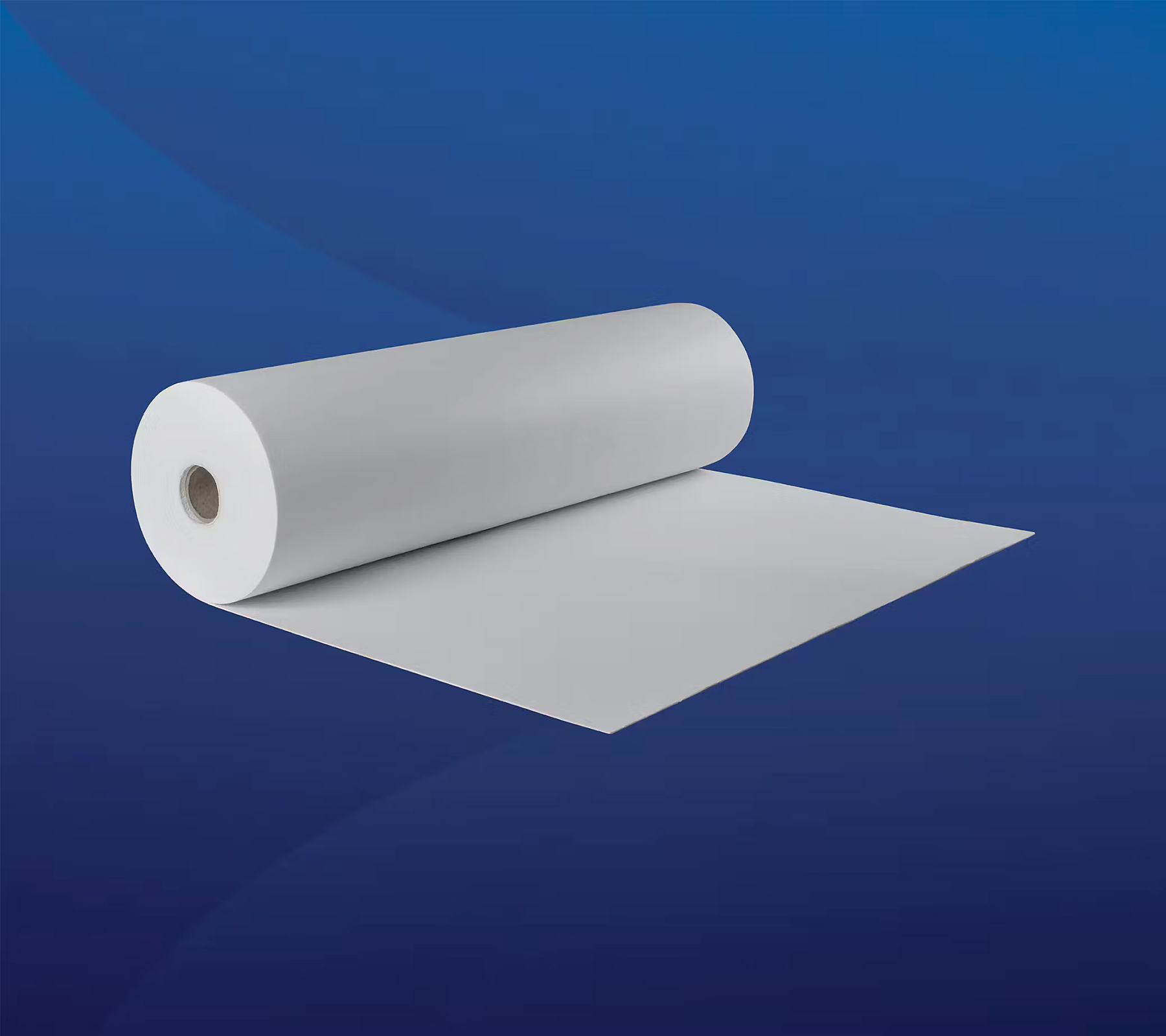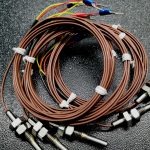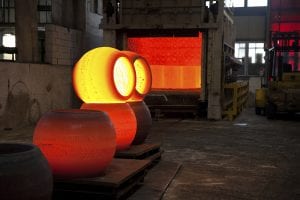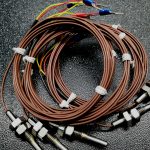Insulation paper is a thin, flexible, high-temperature material used in industrial processing applications where heat management is critical. It provides thermal protection up to 3,000°F (1,600°C) and is easily adaptable to complex equipment geometries.
With versatility, durability, and excellent thermal performance, insulation paper becomes an ideal insulation solution for furnaces, boilers, heat exchangers, automotive parts, and more.
In this article, an overview of insulation paper’s capabilities and applications will be presented.
What is thermal Insulation paper?
Insulation paper is made from fibers mixed with additives dispersed in water and formed into a thin, flexible sheet. The sheets are produced for various temperature grades, ranging from 2,200°F (1,200°C) to 3,000°F (1,600°C), depending on application requirements.
This material is characterized by its remarkable versatility. In addition to its typical industrial applications, it can be used to separate products, stack them, and much more. Plus, it’s easy to cut and shape as needed.
Insulation paper is available in multiple thicknesses and densities. Before choosing the product appropriate for your needs, relying on expert engineering advice is recommended.
Key properties and features
As mentioned, insulation paper stands out for its soft and flexible texture, allowing it to be easily cut or folded to fit irregular equipment profiles.
In addition to its resilience and capacity to withstand mechanical and thermal stresses at elevated temperatures, it requires no curing or preparation before use. Furthermore, it retains its flexibility even after exposure to extreme temperatures.
Correctly installed insulation paper can meet equipment insulation needs for more than a decade. It shows virtually no deterioration over time when stored properly. Similarly, the material is highly tolerant to vibration and impact.

Composition
The NUTEC catalog offers a wide variety of high temperature insulation solutions, including:
SuperPly Low Biopersistence Fiber Paper: This is comprised of low biopersistence fibers. Composed of calcium, silica, and magnesium, it can withstand temperatures up to 2,200°F (1,200°C).
MaxPly Refractory Ceramic Fiber Paper: This is manufactured from high-index and high-purity spun fibers, forming a uniform, resistant, flexible, lightweight sheet. With an alumina and silica composition, it can withstand temperatures of 2,300°F (1,260°C). The product can withstand up to 2,600°F (1,425°C) when zirconia is added to the mix.
MaxShield™ for Fire Protection: This is a line of ceramic fiber papers designed to provide superior thermal insulation and passive fire protection. These paper sheets offer high temperature stability and low thermal conductivity, making them ideal for applications requiring thin, lightweight, heat-resistant materials. MaxShield™ products, such as MaxShield™ HPS and MaxShield™ SMG papers, are manufactured from high-purity spun fibers, forming uniform, robust, flexible, and lightweight sheets. These have a maximum use temperature of 2,300°F (1,260°C) and 2,200°F (1,200°C), respectively.
These are highly sought after in industries requiring thin, light materials capable of withstanding high temperatures.
NUTEC Insulation Papers offers a complete and reliable solution for enterprises that need high-temperature materials while maintaining the highest safety and performance standards.
With a wide range of options and a commitment to asbestos-free materials, NUTEC stands as a reliable source of high temperature products.

PCWPly 3000 Polycrystalline Wool
In addition to the mentioned compositions, it is very important to consider the Polycrystalline Wool, an essential component of PCWPly 3000 paper.
This paper is a remarkable industrial material, changing the game for high-temperature applications. Made from high-purity polycrystalline wool (PCW), this paper offers many exceptional characteristics, making it an ideal choice for various industries.
Among its key features are:
Resistance to Extreme Temperatures: PCWPly 3000 can withstand temperatures up to 3,000°F (1,600°C), making it suitable for heat-tolerance applications.
Chemical Resistance: Its excellent chemical resistance allows it to resist hostile environments and corrosive substances.
Thermal Efficiency: With low-thermal conductivity, it minimizes heat transfer, making it invaluable in applications where thermal insulation is essential.
Free of Hazardous Particles: PCWPly 3000 is effectively free of hazardous particles, ensuring a clean and safe work environment.
Versatile and Easy to Use: Thanks to its lightweight yet durable nature, it can be wrapped, cut, or shaped to suit various needs.
Superior Resistance: Despite its lightness, it exhibits high compression resistance, guaranteeing reliability in demanding situations.
Its technical specifications include:
- Color: White.
- Density: 13-15 PCF.
- Organic Binder: 8-10%.
- Chemical Composition (%): Al2O3 ≥ 72%, SiO2 ≤ 28%.
- Trace Elements: Less than 1%.
- Sizes Available: 1/16” (0.0625”) – 24” x 48” (200’), 1/8” (0.125”) – 24” x 48” (100’), 1/4” (0.25”) – 24” x 48” (50’).
- Maximum use Temperature: 3,000°F (1,600°C).
- Thermal Conductivity: 0.35 W/mK average (results may vary).
Furthermore, PCWPly 3000 is environmentally friendly, as PCW is REACH registered and suitable for use in the European market, meeting rigorous regulatory requirements.
In a world where extreme heat and harsh chemicals are the norm, PCWPly 3000 can be a game changer. It is not just another paper product; it offers performance and reliability that complies with environmental responsibility.
Whether in the automotive, manufacturing, or any other industry requiring high temperature materials, PCWPly 3000 can be an ideal solution from NUTEC.
Applications and use cases
Insulation paper’s light, thin, and adaptable nature makes it a universal and practical insulation for unique equipment geometries. For instance, it can be wrapped around circular heat exchanger tubes or folded into narrow insulation panels for limited space areas.
Also, it is commonly used as a high-temperature gasket material to fill gaps and prevent heat loss, providing a flexible, durable, high-performance solution.
In foundries, this kind of paper is wrapped around molds to create a thermal barrier that prevents excessive surface temperatures, improving operator safety and comfort. Additionally, it is easy to maintain, with only routine visual inspections recommended for damage or degradation.

Regulatory considerations
Fiber regulations vary across geographic regions. For example, the use of refractory ceramic fiber is limited in Europe. Access to multiple ceramic fibers allows one to meet various regulatory requirements.
Benefits and advantages over alternatives
Compared to thick, heavy insulation blankets, ceramic paper offers insulation in a thin, flexible form. At the same time, it is a fitting upgrade for modernizing existing process lines without significant modifications.
Compared to alternatives, the high fiber index in ceramic paper products results in lower thermal conductivity, smoother handling, and greater mechanical strength.
Additionally, NUTEC maintains an extensive inventory of ceramic paper that enables rapid delivery for urgent requirements, providing insulation buyers with supply assurance.
Considerations before choosing the right Thermal Insulation Paper product
It is necessary to take several factors into account to select the right insulation paper product:
Temperature, design, regulations, and specifications: First, it is critical to know the application temperatures and design requirements that may apply regarding insulation product composition.
Consult insulation experts: It is recommended to leverage the knowledge of insulation experts. NUTEC Applications engineers, for example, run simulations and provide access to the Heat Flow Program, which facilitates industrial process analysis.
Guidance from NUTEC: As an insulation solutions specialist, NUTEC can guide you on the ideal product grade. Its experience can ensure the appropriate selection of insulation paper based on factors such as temperature, loading conditions, and expected lifespan, among other criteria.
Conclusion
With unmatched thermal capabilities, design flexibility, and durability, insulation paper is a versatile high temperature insulation solution for applications ranging from furnaces to stoves, boilers, heaters, and heat exchangers, among others.




































